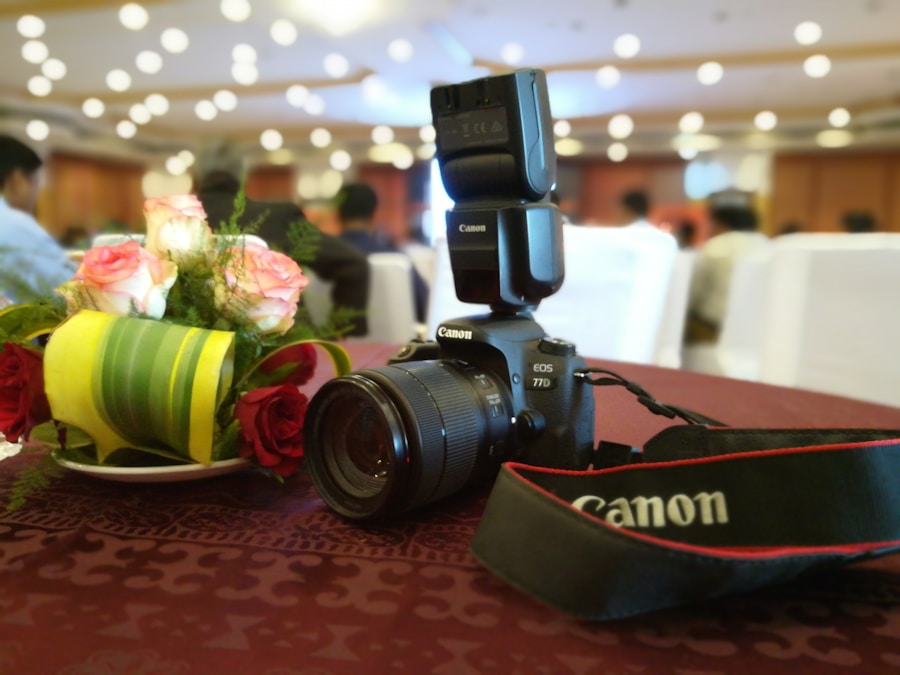Black tie photography is more than just capturing images; it’s about encapsulating the essence of elegance and sophistication that comes with formal events. When you step into the world of black tie photography, you are not merely a photographer; you become a storyteller, weaving narratives through your lens. Each click of the shutter is an opportunity to immortalize moments that reflect the grandeur of the occasion.
Whether it’s a wedding, gala, or corporate event, your role is to highlight the beauty and grace of the attendees, showcasing their attire and the ambiance of the event. To master the art of black tie photography, you must develop an eye for detail. The intricate designs of tuxedos and evening gowns, the glimmer of jewelry, and the subtle expressions on faces all contribute to the overall narrative.
You should strive to capture not just the posed portraits but also the emotions and interactions that unfold throughout the event. This requires a blend of technical skill and artistic vision, allowing you to create images that resonate with viewers long after the event has concluded.
Key Takeaways
- Black tie photography requires attention to detail and a focus on capturing elegance and sophistication.
- The right location for black tie photography should complement the formal attire and create a luxurious atmosphere.
- When posing for black tie photography, focus on creating flattering angles and compositions that highlight the formal attire.
- Lighting is crucial in black tie photography to enhance the elegance and sophistication of the subjects.
- Editing and retouching should be subtle and enhance the natural beauty of the subjects in black tie photography.
Choosing the Right Location for Black Tie Photography
Selecting the perfect location for black tie photography is crucial in setting the tone for your images. The venue should complement the elegance of the attire and enhance the overall aesthetic of your photographs. Consider spaces that exude sophistication, such as grand ballrooms, historic mansions, or beautifully landscaped gardens.
Each location offers unique opportunities for stunning backdrops that can elevate your photography to new heights. When scouting locations, pay attention to the architectural details and natural light available. A venue with high ceilings and ornate decorations can provide a dramatic setting, while outdoor locations can offer a softer, more romantic atmosphere.
You should also think about accessibility and how it will affect your ability to move around and capture candid moments. Ultimately, the right location will not only enhance your images but also create a memorable experience for those being photographed.
Posing and Composition Tips for Black Tie Photography

Posing is an essential aspect of black tie photography that can significantly impact the final outcome of your images. You want to guide your subjects into poses that reflect their personalities while also showcasing their attire in the best light. Encourage them to stand tall and confident, with shoulders back and heads held high.
Subtle adjustments, such as angling their bodies slightly or placing hands on hips, can create a more dynamic composition that draws attention to their outfits. Composition plays a vital role in creating visually appealing photographs. Utilize techniques such as the rule of thirds to create balance within your frame.
Position your subjects off-center to add interest and allow negative space to breathe within the image. Additionally, consider incorporating leading lines or framing elements that draw the viewer’s eye toward your subjects. By combining thoughtful posing with strong composition, you can create striking images that capture the elegance of black tie events.
Lighting Techniques for Capturing Elegance in Black Tie Photography
| Lighting Technique | Description |
|---|---|
| Rembrandt Lighting | A technique that creates a small triangular highlight on the cheek and a catchlight in the eye, often used to create a dramatic effect. |
| Loop Lighting | Creates a small shadow of the subject’s nose on their cheek, often used to create a soft and natural look. |
| Butterfly Lighting | Creates a small shadow under the subject’s nose, often used to create a glamorous and elegant look. |
| Split Lighting | Divides the face into equal halves with one side in the light and the other in shadow, often used to create a bold and striking effect. |
Lighting is one of the most critical elements in photography, especially when it comes to black tie events where elegance is paramount. You should aim to use soft, diffused lighting to flatter your subjects and enhance their attire. Natural light can be your best friend; if you’re shooting outdoors or in a venue with large windows, take advantage of golden hour lighting for a warm, inviting glow.
In situations where natural light is limited, you may need to rely on artificial lighting sources. Softboxes or diffusers can help create a flattering light that mimics natural conditions. Additionally, consider using off-camera flash to add depth and dimension to your images without overpowering your subjects.
Experimenting with different lighting setups will allow you to find what works best for each unique event, ensuring that you capture the elegance inherent in black tie occasions.
Editing and Retouching for Black Tie Photography
Once you’ve captured stunning images at a black tie event, the next step is editing and retouching to enhance their beauty further. Post-processing allows you to refine colors, adjust exposure, and remove any distractions that may detract from the elegance of your photographs. You should aim for a polished look that maintains a natural feel; over-editing can lead to images that appear artificial and detract from the sophistication you wish to convey.
When editing black tie photographs, pay special attention to skin tones and textures. You want to ensure that your subjects look their best while still appearing authentic. Use tools like frequency separation for skin retouching, which allows you to smooth out imperfections without losing detail.
Additionally, consider applying subtle color grading to evoke a specific mood or atmosphere that aligns with the event’s theme. Thoughtful editing will elevate your images and help them resonate with viewers.
Capturing Candid Moments in Black Tie Photography

While posed portraits are essential in black tie photography, candid moments often tell a more compelling story about the event. These spontaneous interactions between guests can reveal genuine emotions and connections that posed shots may not capture. To seize these fleeting moments, you must remain observant and ready to react quickly as events unfold around you.
To effectively capture candid moments, consider blending into the background rather than being an intrusive presence. Use a longer lens to maintain distance while still getting close enough to capture intimate interactions. Look for opportunities where guests are laughing, dancing, or engaging in heartfelt conversations; these moments often encapsulate the spirit of the event better than any posed shot could.
By focusing on candid photography alongside traditional portraits, you can create a well-rounded collection that truly reflects the essence of black tie gatherings.
Equipment and Gear for Black Tie Photography
Having the right equipment is essential for achieving stunning results in black tie photography. A professional-grade camera with a fast lens will allow you to capture high-quality images even in low-light conditions typical of formal events. A full-frame DSLR or mirrorless camera is often preferred due to its superior performance and image quality.
In addition to your camera body, invest in a selection of lenses that cater to various shooting scenarios. A prime lens with a wide aperture (such as f/1.8 or f/2.8) is ideal for portraits, allowing you to achieve beautiful bokeh effects that isolate your subjects against elegant backgrounds. A versatile zoom lens can also be beneficial for capturing both wide shots of the venue and close-ups of intricate details like jewelry or floral arrangements.
Don’t forget essential accessories such as extra batteries, memory cards, and a sturdy tripod for stability during low-light situations.
The Importance of Professionalism in Black Tie Photography
Professionalism is paramount in black tie photography; it not only reflects on your work but also impacts how clients perceive you as a photographer. Arriving on time, dressed appropriately for the occasion, and maintaining a positive attitude are all essential components of professionalism that contribute to a successful shoot. Your demeanor sets the tone for how guests will interact with you; being approachable yet unobtrusive will help you capture authentic moments without disrupting the flow of the event.
Moreover, clear communication with clients before and during the event is crucial in ensuring everyone’s expectations are met. Discussing timelines, specific shots they desire, and any potential challenges will help you prepare adequately for the day ahead. After the event, delivering high-quality images promptly demonstrates your commitment to excellence and reinforces your reputation as a reliable professional in black tie photography.
By embodying professionalism at every stage of your work, you will not only enhance your craft but also build lasting relationships with clients who appreciate your dedication to capturing their most elegant moments.
